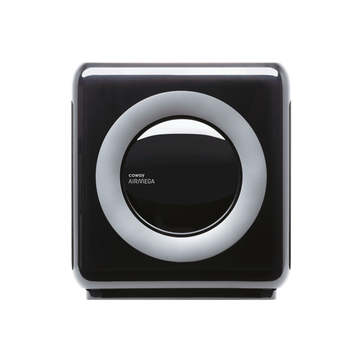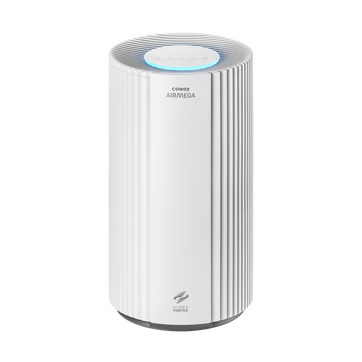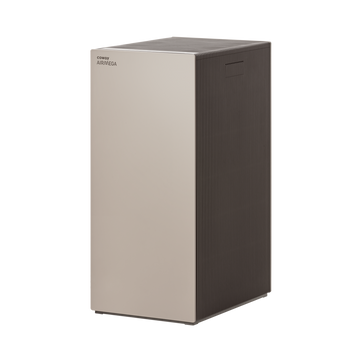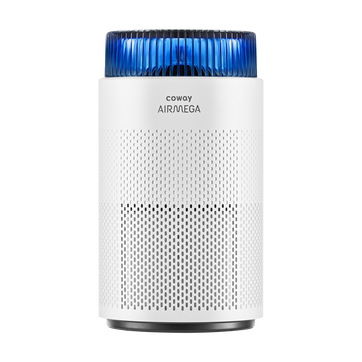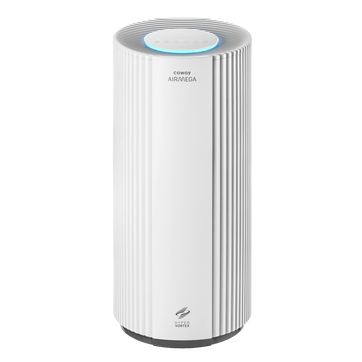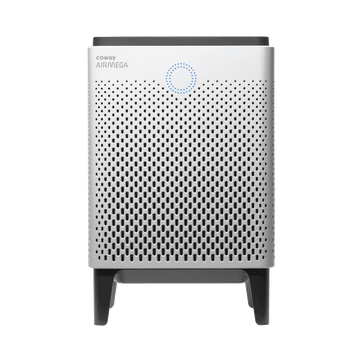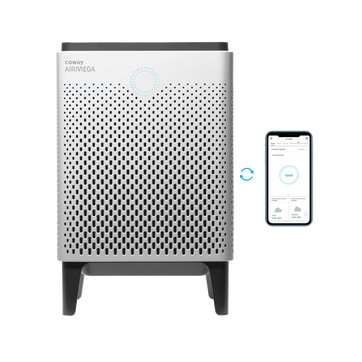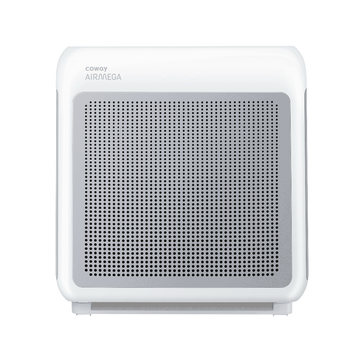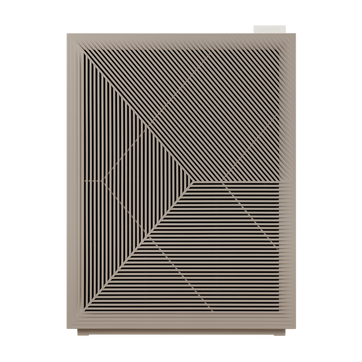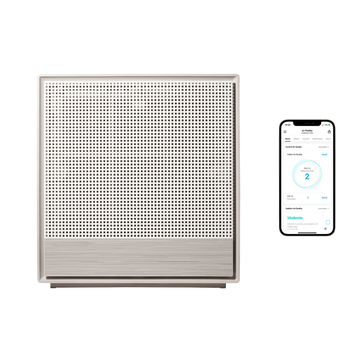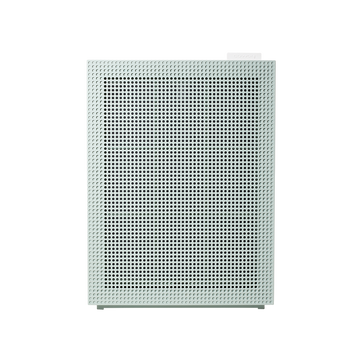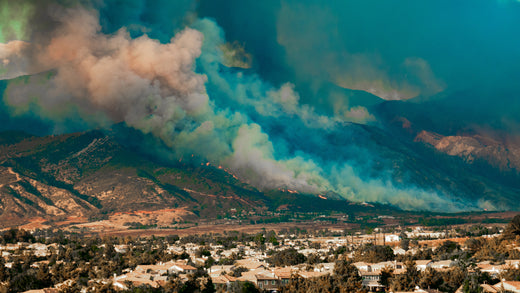
How to Protect Yourself From Wildfire Air Quality Changes
As climate change continues to fuel the frequency and intensity of wildfires across the globe, it is crucial to understand the potential health risks associated with wildfire smoke and take appropriate measures to protect ourselves. At Coway, we hope to provide practical steps to safeguard your health and minimize exposure to poor air quality caused by wildfires. In this blog, we explore effective strategies and essential tips to help you create a cleaner indoor environment, ensuring you can breathe deeper and feel better amidst wildfire air quality challenges.
How Do Wildfires Negatively Impact Our Health?
During a wildfire, the burning of vegetation releases a diverse range of particles and gases, including organic carbon, black carbon, nitrogen oxides, carbon monoxide, volatile organic compounds and hazardous air pollutants. These particles and gasses can spark a host of detrimental respiratory and cardiovascular complications for anyone experiencing the pollution.
When discussing air quality, we commonly focus on PM2.5, which refers to particulate matter that is 2.5 microns or smaller. These particles are tiny enough to penetrate deep into the lungs. Exposure to PM2.5, whether from smoke during wildfires or other sources like vehicle emissions, can have severe effects on our health and well-being.
It's important to note that the type of substance burning can significantly impact the chemical composition and potential health risks of a wildfire.
When Is Wildfire Season?
In North America, most wildfires occur between June and August, or what is known as wildfire season. Typically, wildfires peak in August because of the increasingly dry and hot climate across the continent.
Climate crises have only expanded the ramifications and duration of wildfires through drought, heat and wind. Even if you do not live near a raging wildfire, you still might experience air quality changes and smoke exposure. This is because smoke is comprised of a complex mixture of gases and fine particles that travel with ease.
Understanding Out-of-Season Fire Risks
While North American wildfires traditionally peak between June and August, recent climate patterns have created conditions where fires can occur year-round. Several key factors contribute to this changing pattern.
Climate whiplash events can create perfect conditions for fires, as periods of heavy rain promote vegetation growth, followed by intense dry spells that turn this growth into fire fuel. This pattern is particularly concerning when combined with seasonal winds.
Strong seasonal winds can reach speeds of 80-100 miles per hour—comparable to Category 2 or 3 hurricanes—making fire containment extremely challenging regardless of the season. These winds can quickly spread embers far from the original fire location, creating new hotspots.
The transition between El Niño and La Niña weather patterns can create particularly vulnerable conditions, where previously wet regions experience sudden, intense dry periods. Additionally, climate change is causing vegetation to dry out faster than in previous decades, increasing fire risks even during traditionally lower-risk seasons.
These changing conditions mean that air quality protection needs to be a year-round priority, not just a seasonal concern. This makes it even more important to maintain proper indoor air quality systems throughout the year. To meet this critical need, Coway's Airmega line features the advanced HyperCaptive™ filtration system – a sophisticated network of capture technologies that sets a new standard in air purification.
How to Combat Wildfire Air Quality Changes
In regions prone to wildfires, the impact on air quality can be significant, posing serious health risks to communities. As wildfires continue to become more frequent and intense, it is crucial to understand how to combat the changes in air quality caused by these natural disasters.
By implementing certain measures, you can mitigate health risks and create a safer indoor environment amidst changing air quality conditions.
1. Stay Informed
Keeping yourself updated about wildfire activities in your region is the first step towards protecting your health this summer. Local authorities, meteorological agencies and environmental organizations often issue air quality advisories and alerts during wildfire events.
Make use of reliable sources such as government websites, weather apps and local news channels to monitor the air quality index (AQI) in your area. By staying informed, you can take necessary precautions and make informed decisions regarding outdoor activities.
2. Create a Safe Indoor Environment
When wildfire smoke affects air quality, it is essential to create a clean and safe indoor environment for you and your family. During wildfires, keep windows and doors closed to prevent smoke from entering your home or workspace.
Utilizing air purifiers with HEPA (high-efficiency particulate air) filters can also remove fine particulate matter from indoor air. Coway’s Airmega Aim, the latest innovation in air purification technology, combines the functionality of a fan and an air purifier to provide exceptional air purification and efficient air circulation. With its 3-stage filter and dynamic 360-degree air intake, the Airmega Aim cleanses the air in a 492-square-foot room in just one hour, making it perfect for cleaning and cooling smaller spaces like a studio or dorm room during wildfire season.
If you live in high-risk areas, consider large air purifiers such as the Airmega 250 or the Airmega ProX. These models feature Turbo mode which uses high-performance airflow to capture particles at a rapid speed and clean the room at maximum efficiency. Turbo mode is particularly useful at times when there is a sudden influx of pollutants such as cooking odors, high pollen count, or wildfire smoke.
3. Limit Outdoor Activities
During periods of poor air quality caused by wildfires, it is advisable to limit your time spent outdoors, especially during peak smoke hours. Wildfire smoke tends to be more concentrated in the early morning and late evening. If you must go outside, though, consider wearing a mask rated N95 or higher, as it can help filter out fine particles and reduce your exposure to harmful pollutants. Keep in mind that masks alone may not provide complete protection, so minimizing outdoor exposure is still the best approach.
4. Improve Indoor Air Quality
To further enhance indoor air quality during wildfire events, take proactive measures to reduce indoor pollution sources. In addition to investing in a reputable air purifier, such as the Airmega 400, which removes 99.999% of all airborne contaminants down to 0.01 microns, you can also avoid activities that can contribute to poor air quality, such as smoking, burning candles or incense or using harsh cleaning products. Additionally, try to avoid using appliances that can release pollutants, such as gas stoves and heaters. Instead, opt for electric alternatives when possible.
Meet Our Specialized Intense Smoke Filter
Our latest breakthrough in air purification technology comes in the form of a custom filter, specifically engineered for the Airmega Mighty AP-1512HH and 200M models. This filter is designed to tackle the unique challenges posed by extreme wildfire conditions, offering exceptional protection when you need it most.
The new intense smoke filter delivers impressive results in removing harmful compounds:
-
Eliminates up to 99.99% of Naphthalene, a byproduct of burning wood, leaves, and synthetic materials like plastic and treated lumber
-
Captures up to 99.98% of Sulfur dioxide (SO₂), which comes from sulfur-rich materials including certain plants, soil, and construction materials
-
Removes 99.98% of Nitrogen dioxide (NO₂) produced by burning trees, grass, and other nitrogen-containing organic matter

Smart Technology for Peace of Mind
Smart Airmega models have intelligent monitoring systems that continuously assess your indoor air quality, automatically activating when they detect a decline in air purity. This means you can rest easy knowing you're protected, even when distant wildfires threaten air quality in your region.
By investing in an Airmega air purifier, you're creating a safe haven of clean air for your family, regardless of outdoor conditions.
In addition to investing in a reputable air purifier, such as the Airmega Mighty AP-1512, which removes 99.999% of all airborne contaminants down to 0.01 microns, you can also avoid activities that can contribute to poor air quality, such as smoking, burning candles or incense or using harsh cleaning products. You’ll also want to limit candles, incense, or harsh cleaning products that might emit toxic substances. Additionally, try to avoid using appliances that can release pollutants, such as gas stoves and heaters. Instead, opt for electric alternatives when possible.
6. Stay Hydrated and Maintain a Healthy Lifestyle
Since wildfire smoke can cause respiratory irritation and inflammation, it is important to support your respiratory system during periods of poor air quality. Staying hydrated can help you do just that.
Proper hydration helps your liver and kidneys remove toxins, reducing systematic inflammation from smoke. Water also keeps your airways moist. Alongside using reliable Coway Aquamega water purifiers to clean and purify your water, you can foolproof your water-drinking routine by carrying a reusable water bottle with you wherever you go to encourage regular hydration throughout the day. It is almost important to generally maintain a healthy lifestyle by eating a balanced diet rich in antioxidants, which can help mitigate the damaging effects of pollutants on your body.
7. Seek Medical Advice, if Necessary
Any person with a pre-existing respiratory condition, such as asthma or chronic obstructive pulmonary disease (COPD), may be more susceptible to the adverse effects of wildfire smoke. If you experience persistent symptoms such as coughing, shortness of breath, or chest tightness, consult a healthcare professional for guidance. They can provide personalized advice, prescribe medications if needed, and help you manage your respiratory health during periods of poor air quality.
Protect Yourself and Your Loved Ones This Wildfire Season with Coway
As wildfires become an increasingly common occurrence, protecting ourselves from the wildfire air quality changes is essential. By staying informed and creating a safe indoor environment, we can minimize the health risks associated with wildfire smoke. Remember, taking proactive steps to protect yourself and your loved ones is crucial for your well-being, especially during wildfire events.
With Coway, you can rest assured you are prioritizing both your indoor air quality and health. Learn more about our range of air purifer offerings today.
Sources:
Wildfire Smoke and Your Patients' Health.
https://scied.ucar.edu/learning-zone/air-quality/air-pollution
Environmental Health Impacts of Wildfires
What Happens When a Plastic City Burns
Disclaimers
1Coway air purifiers have been proven to trap dust, pollen, dander, viruses and bacteria in the air based on KCL (Korea Conformity Laboratories) testing.They have been tested in a 30㎥ size chamber according to the Korea Air Cleaning Association standard (SPS-KACA 002-132:2022 Modified) to measure the 0.01㎛ size of particle removal rate. It was tested on maximum airflow speed in normal room temperature and humidity conditions. The performance may vary in the actual living environment of customers.
→ Tested with Airmega Aim, 50, 100, 150, 160, Tower AP-1216L, Mighty AP-1512HH, MightyS AP-1512HHS, 200M, Icon, IconS, 230, 240, 250, 250 Art, 250S, 300, 300S, 350, 400, 400S, 450, ProX
299.97% of viruses, bacteria, fungi and pollen were verified to be removed from the air for Coway air purifiers which have Green True HEPA™ filter applied based on the Japan Food Research Laboratories(JFRL) testing according to JEM 1467 standard.
→ Tested with Coway Airmega Mighty AP-1512HH, MightyS AP-1512HHS, 250, 250 Art, 250S, 300, 300S, 400, 400S
→ All tested by JFRL and received above result within below time.
4The concentration of ammonia, acetaldehyde and acetic acid were proven to be removed within 30 minutes by FCG Research Institute, Inc. Human Life Science Lab. It is not a demonstration result in the actual use space. Not all odors and gases may be supported. → Tested with Coway Airmega 150, 160, Mighty AP-1512HH, MightyS AP-1512HHS, 400, 400S
5The coverage area of the air purifier is based on an area where the air cleaner can make two air changes per hour (ACPH). An air change per hour translates to how many times an air purifier can clean an area, assuming the height of a ceiling to be 8 ft, in one hour. Therefore ** means two air changes per hour means that the cleaner can clean the area once every 30 minutes and * means air changes per hour means that the air purifier can clean the area once every 60 minutes.
10Terms and conditions apply. Discounts, including promotions, coupons, bundle discount and subscription discount, cannot be stacked on top of other coupons. During promotional periods, discount codes will not be able to be applied to orders. Promo codes may apply to products only—filters, accessories, and new products within 3 months of the release date are not included.
11Based on Coway R&D internal laboratory testing, activated carbon filtration was shown to remove up to 95% of ammonia odors within 40 minutes, and up to 99% of fecal odors within 20 minutes. Actual performance may vary depending on usage conditions.

